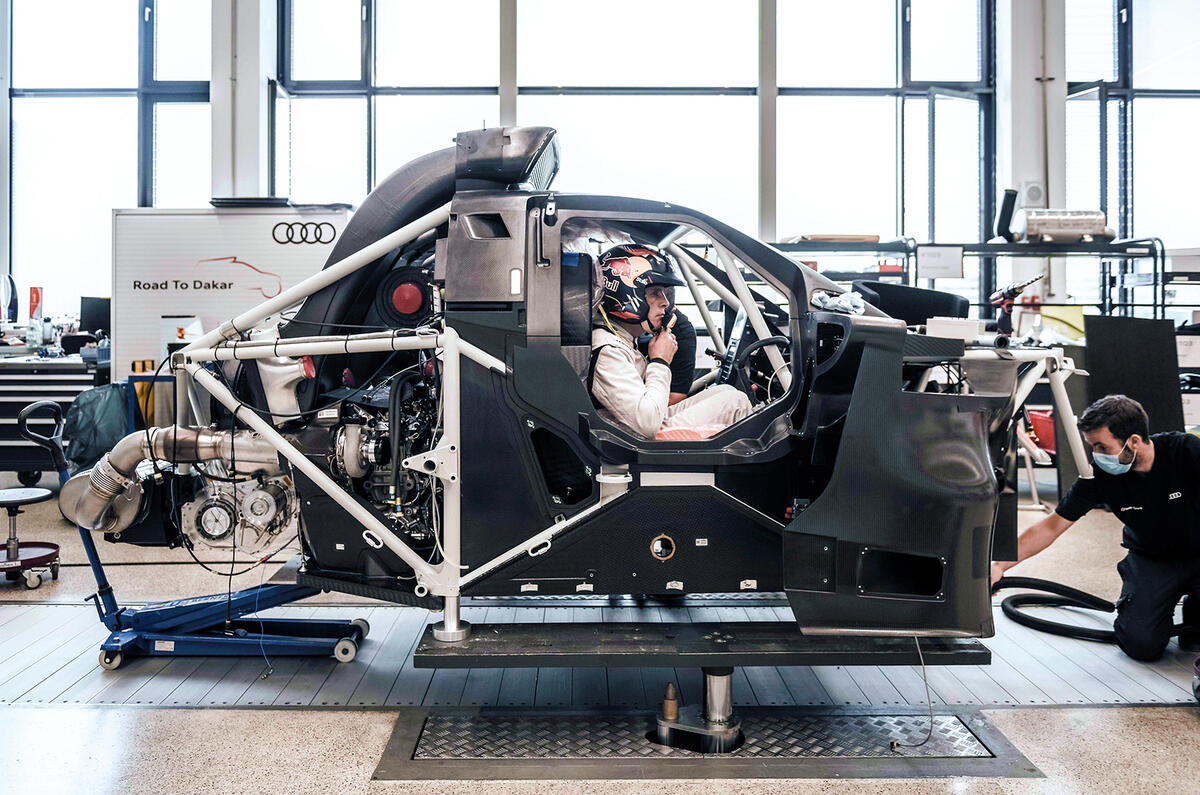As Audi heads for the desert to compete in the Dakar Rally, its RS Q E-tron will have been designed and prepared in excruciating detail to withstand the worst the environment can throw at it.
The new car has something in common with the mighty Group B Audi Quattros in that its structure is a spaceframe enclosed by carbonfibre and panels, with the addition in some areas of Kevlar and tear-resistant Zylon to protect the crew and components from sharp objects penetrating the skin.
The spaceframe is made from an aerospace-grade, heat-resistant, lightweight steel alloy. The design of the structure draws on knowledge derived from Audi’s years of experience in other branches of motorsport, such as DTM, Rallycross, LMP1 sports cars (Le Mans) and lately Formula E (from which the firm has just withdrawn).
The composite panels also serve to protect the crew from the high-voltage components of the electric drive system. The high-voltage battery system (HVBS) is being developed by Audi Sport, weighs 370kg and produces 220kW. Its capacity is a relatively modest 52kWh, but it’s supplemented by a 2.0-litre turbocharged range extender derived from DTM. The HVBS is also enclosed by carbonfibre structures, which include Zylon here and there in some of the more vulnerable areas. But it’s the underbody that requires some special attention, to cope with the extremely rough terrain, huge jumps and flying rocks.
The underside is protected by a 54mm-thick three-layer undertray. The first layer (that closest to the ground) is an aluminium plate, which resists abrasion and especially hard knocks in the same way a conventional off-road sump guard might. The second is a layer of energy-absorbing foam and the third a carbonfibre sandwich layer. Shocks are dispersed by the foam layer into the carbonfibre sandwich, which is the last line of defence. It can crush in a controlled way to absorb the worst impacts and thus protect the battery. In that sense, the carbonfibre sandwich layer is sacrificial and can be replaced during service halts if necessary.
Further safety measures on the electrical side include Audi’s ISO monitor, which can detect fault currents and was used in both LMP1 and Formula E. The system detects major impacts and, in the event of one that is serious enough, will shut down the system. External lights and an audible signal warn outsiders that there’s a problem.
The high-voltage battery and electrical systems are made completely watertight to cope with river crossings, and even the fire extinguishing agent is non-conductive to keep the crew safe were it to activate in the presence of exposed high-voltage parts.








Add your comment